Step 1: Download the Shakespeare in Sheets Files in pdf format
- Hamlet Q2 (1604) Edited by Kaitlyn Blake
- Henry V Q1(1600) Edited by Laura Kimlinger
- King Lear Q1(1608) Edited by Katherine Beste
- Love’s Labour’s Lost Q1 (1598) Edited by Dr. Tara Lyons
- A Midsummer Night’s Dream Q2 (1619) Edited by Katherine Beste
- Romeo and Juliet Q1 (1597) Edited by Carlos Salazar
- The Sonnets Q1 (1609) Edited by Dr. Tara Lyons
- Titus Andronicus Q1 (1594) Edited by Carlos Salazar
- *Venus and Adonis (1599) Edited by Carlos Salazar, Kaitlyn Blake, & Jordan Kee [*Note: Octavo Editions require an extra fold]
Please stay tuned for more Shakespeare in Sheets editions!
Other Links to Sheets on the Web
- Link to Hamlet (1603) Created by Claire M.L. Bourne, Assistant Professor of English, Pennsylvania State University
- Link to Hamlet (1604) on the Folger Shakespeare Library DYI Quarto Site
Step 2: Print the book
These Shakespeare in Sheets editions are designed for printing on 11×17 (tabloid size) paper. To print them correctly, you will need to adjust your printer’s settings and load the paper into the correct paper feed.
Important Printer Set Up Directions:
- Paper Size (11x 17) or Tabloid
- Two-sided Printing
- Scale to Fit
- AutoRotate or Flip on the Long Edge
You may need to experiment with this step because printers and software differ somewhat on options. Here is an image of the printing options using Adobe Acrobat Pro:

Step 3: Fold the Sheets [Quarto]
For direction on folding Octavo editions like Venus and Adonis (1599), click here.
For books in the quarto format (4 pages on each side), each sheet will need to be folded in half twice. When folding, start with the first sheet (A-sheet). Find either the title page or the page with the signature “A1r” and arrange the sheet so that this page is in the lower right corner. See below for examples:
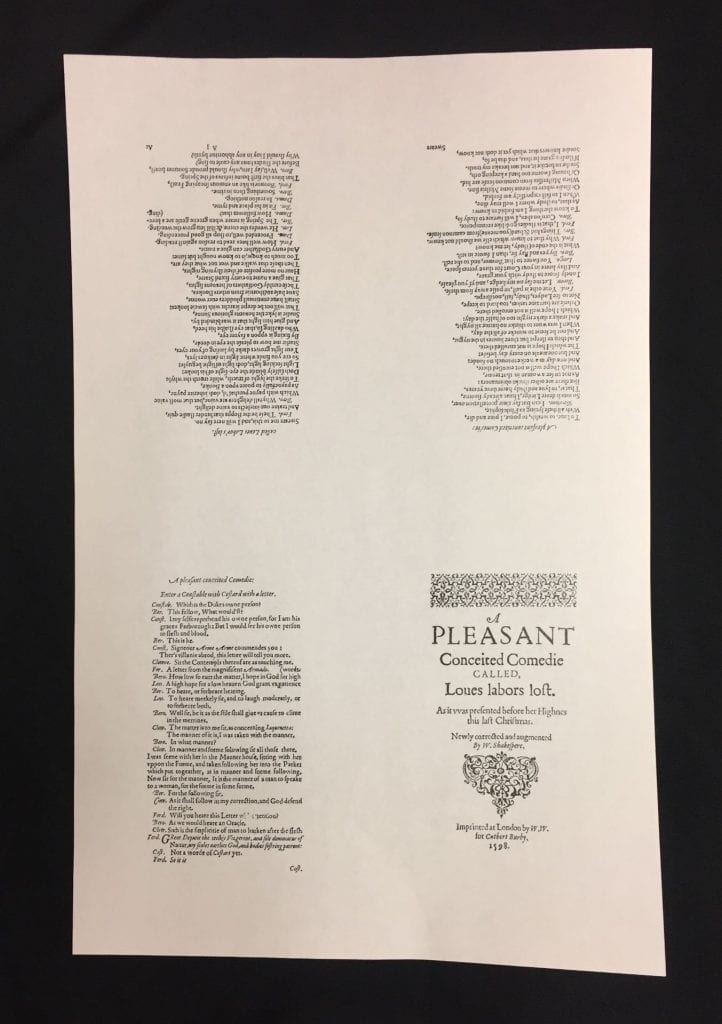
Love’s Labour’s Lost (1598)
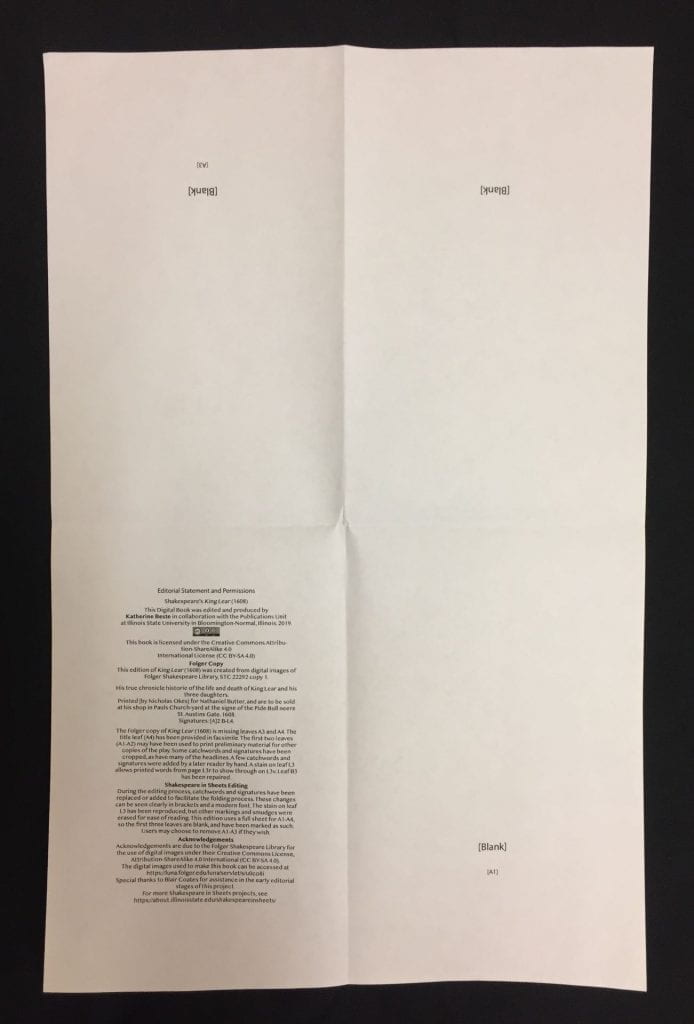
King Lear (1608)
First Fold: Fold the sheet in half (top half under the bottom half) and keep the title page or “A1r” in the bottom right corner. See the results below

Love’s Labour’s Lost (1598)
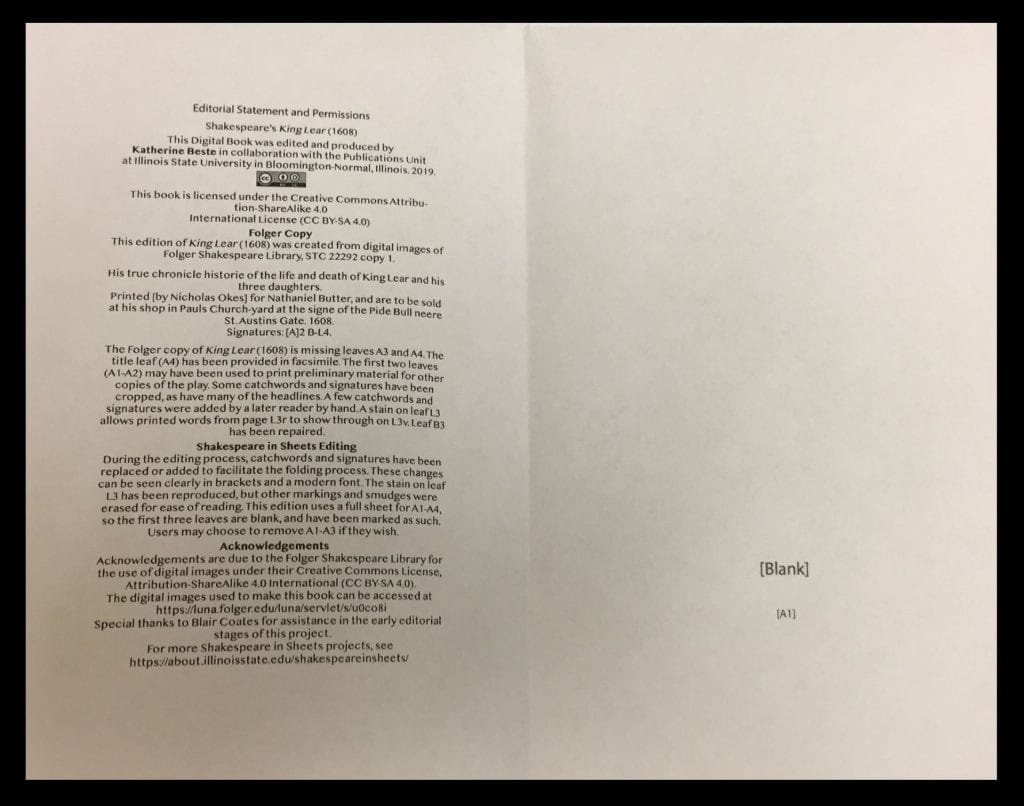
King Lear (1608)
Second Fold: Do it again! Fold the sheet in half (left side under the right side) and keep the title page or “A1r” in the bottom right corner. See the results below.

Love’s Labour’s Lost (1598)

King Lear (1608)
Repeat the process with all sheets in the quarto. Keep them in order so that the A-sheet stays on top, then proceed through the B-sheet, C-sheet, D-sheet, and so on.
Reminder: Always keep the signature with a plain letter (“B” or “C”) in the bottom right corner. The signatures in the early books look like this:
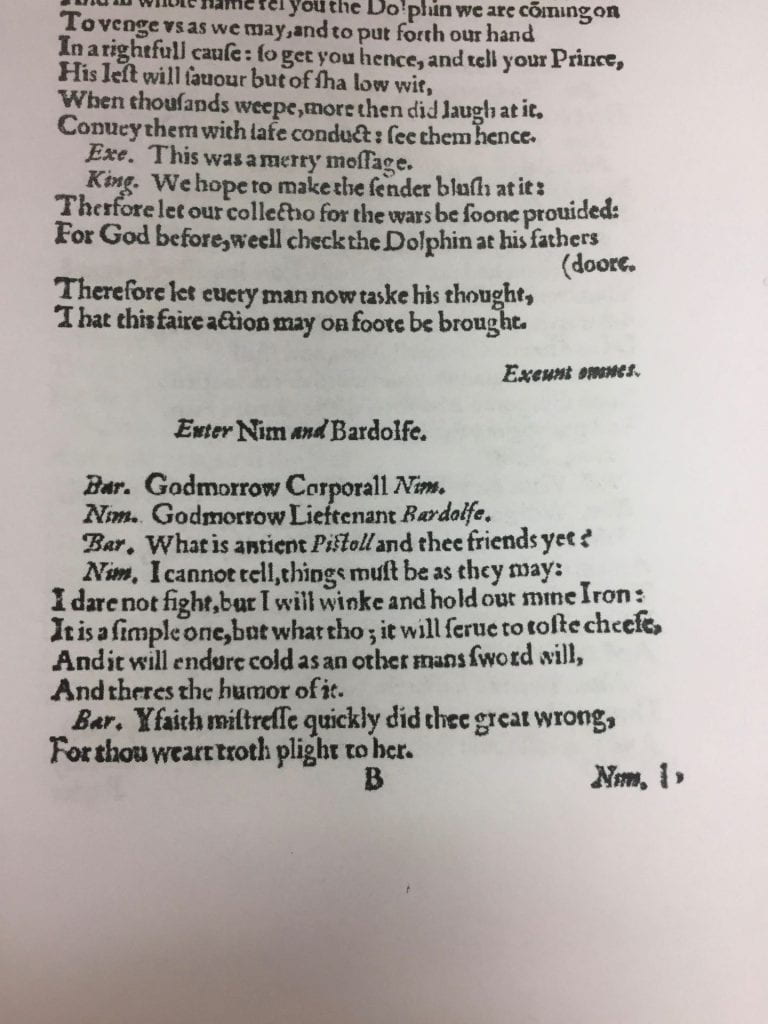
Step 4: Trim and Bind
With scissors or a paper cutter, trim the top edge of each folded sheet. Now, you should be able to turn the pages in each gathering. [If you have an Octavo, you will also need to trim one fore-edge fold.] You can also take this time to cut off any blank pages at the beginning or end of the book, if you wish. See the editorial statement in each book to learn more about why there are extra blank pages in your book.
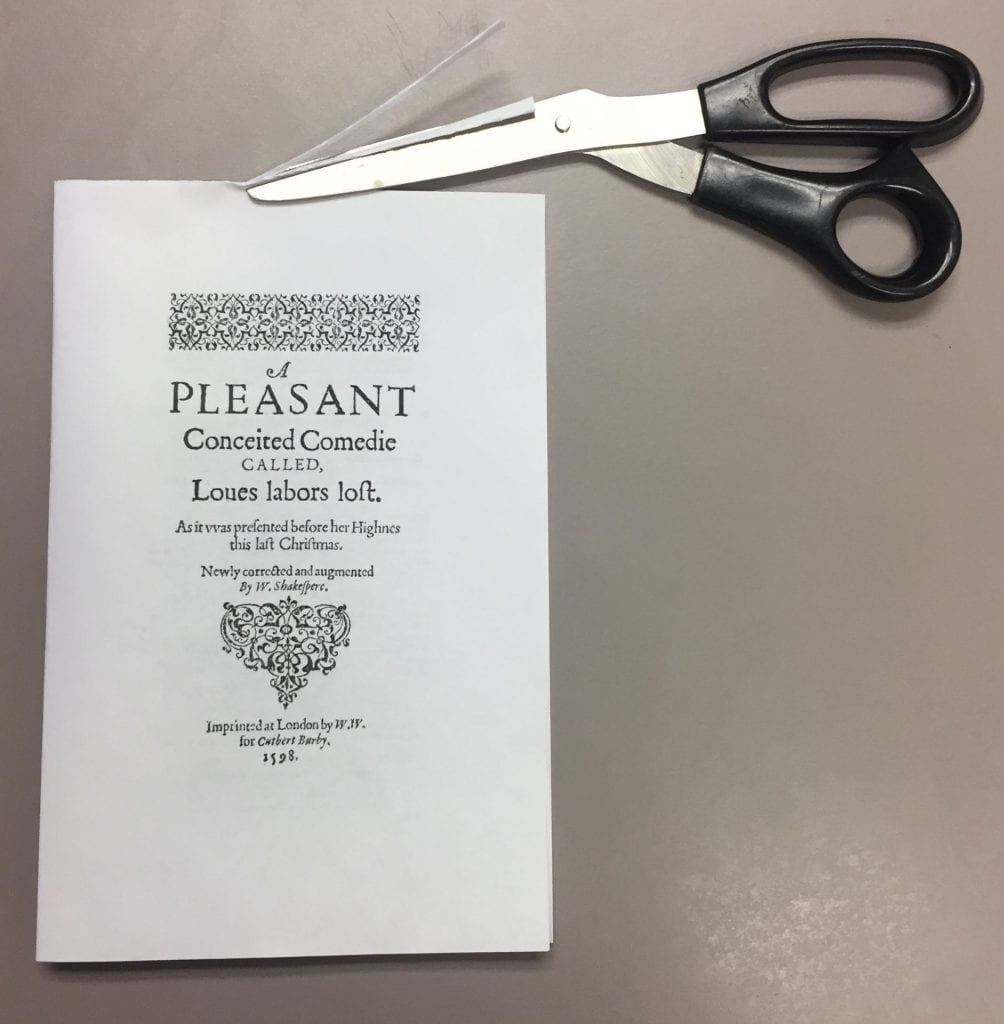
To bind all the gatherings together, you can choose a few different options. You can use a stapler for an easy and inexpensive binding method. For books with ten sheets or more, you may need to use a strong stapler.
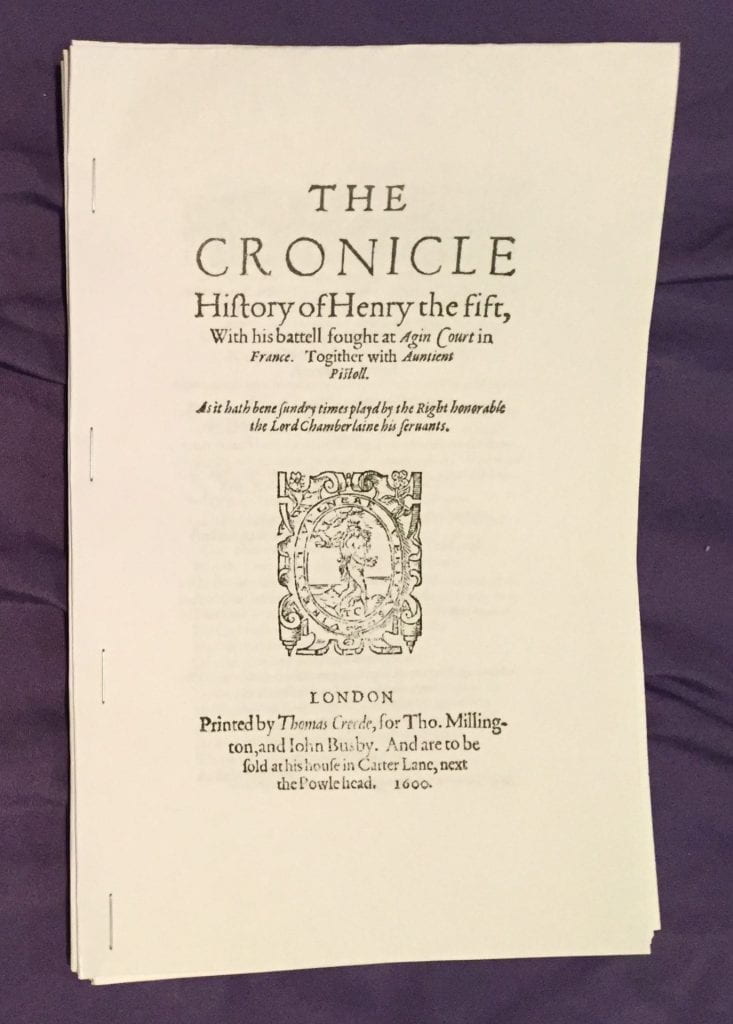
If you are interested in stitching your quarto with thread, you will need some binding supplies: an awl, wax linen thread, and a binding needle. Modern printer paper is thicker and harder to pierce than early modern paper would have been, so you may need to experiment with methods.
